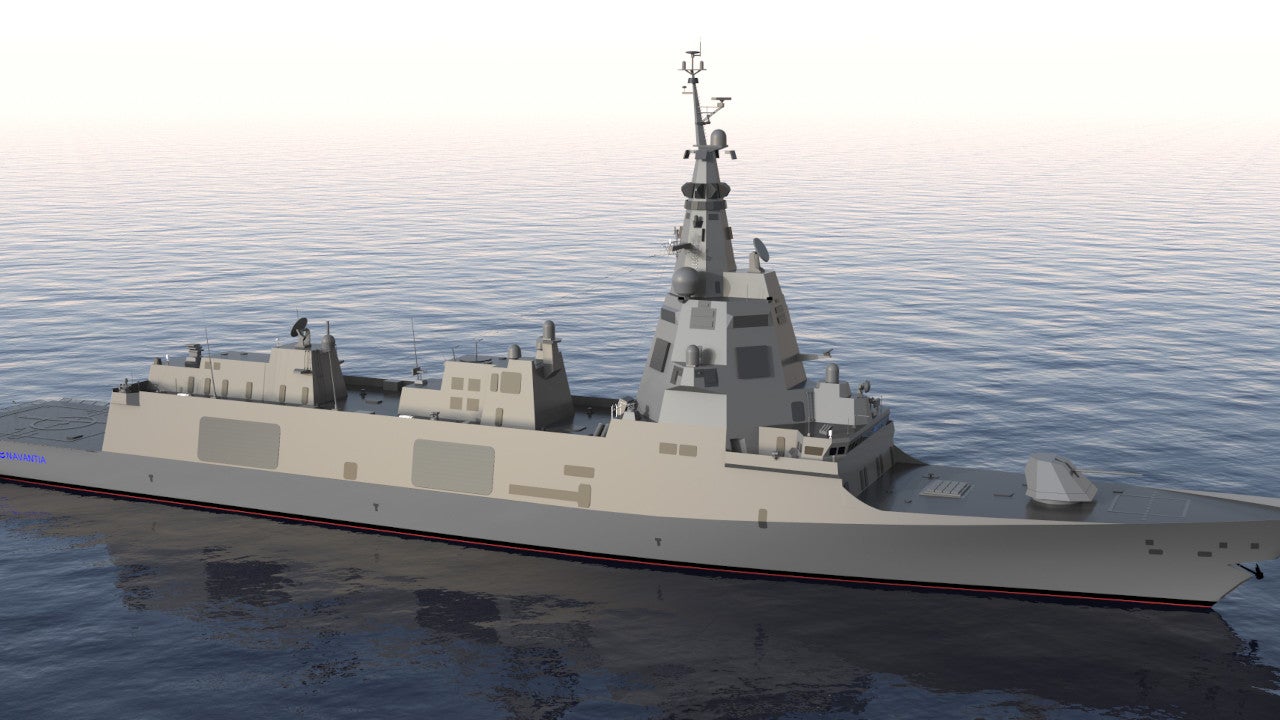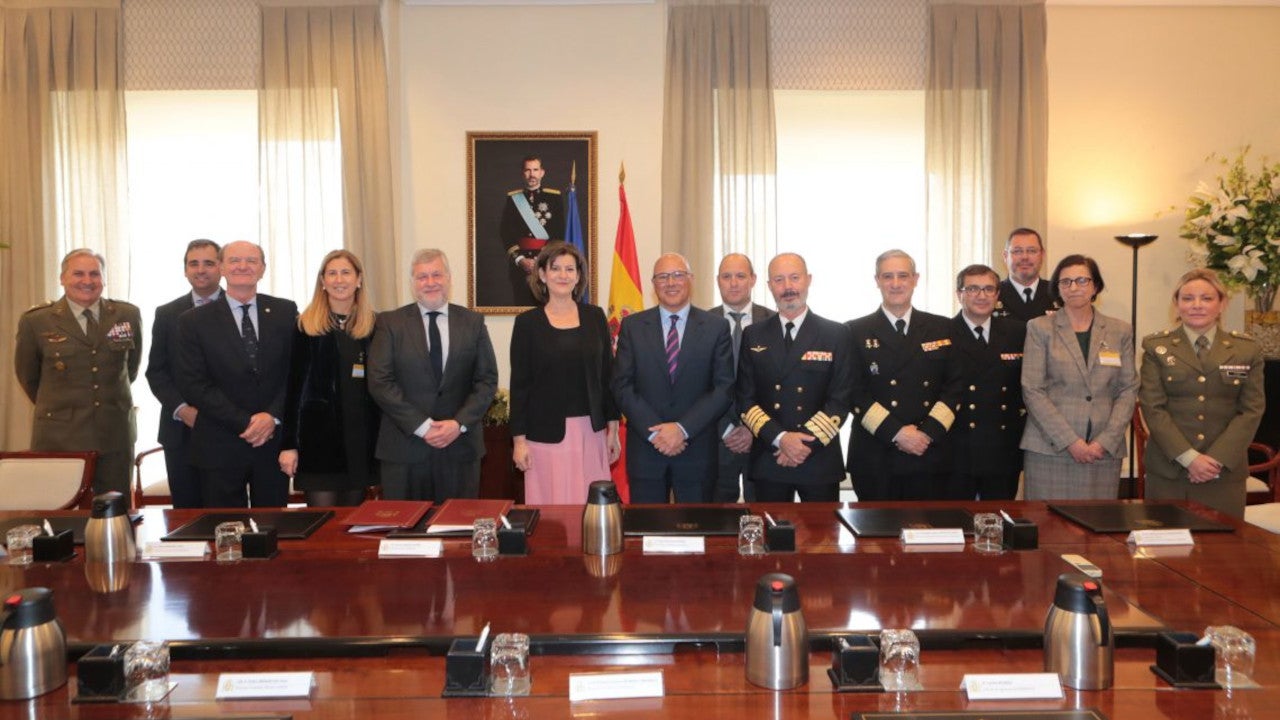The F110-class multi-mission frigates are being developed by Navantia for the Spanish Navy. Also referred to as Bonifaz class, the vessels will be built at Navantia’s Ferrol shipyard in Spain.
The multi-mission frigates with anti-submarine warfare capabilities will be used in fleet protection, maritime security, joint and combined missions and will be deployed to counter conventional and asymmetric threats.
The F110-class will replace Spanish Navy’s Santa Maria-class frigates. The multi-purpose frigates can operate in both blue and littoral waters.
Development of F110-class
The frigate is the first major Spanish naval project to be implemented under Navantia’s Astillero 4.0 (Shipyard 4.0) framework that aims to apply the most advanced integrated control and simulation technologies for the optimisation of shipbuilding processes.
The Spanish Ministry of Defense signed the contract with Navantia for the construction of five F110 frigates for the Spanish Navy in April 2019. The first frigate is expected to be deployed in 2026 while the remaining will be delivered until 2031.
The construction programme will generate approximately 7,000 direct and indirect jobs every year for up to a decade. It will also help in generating activity in the Bay of Cadiz through Navantia Sistemas by developing frigate’s combat system.
The Spanish Council of Ministers approved the €4.3bn ($4.82bn) funding for building five frigates for the Spanish Navy in March 2019. The frigate was exhibited during the Defence and Security Equipment International (DSEI) 2019 event held in September 2019.
F110-class frigate design and features
The F110-class frigate will feature an advanced design with a high degree of automation. It will have a length of 145m, a beam of 18m and a draft of 5m. The displacement of the vessel will be 6,100t while the frigate will be manned by 150 crew members.
The warship’s stern flight deck will accommodate a helicopter and unmanned aerial vehicles. The vessel will also have the capability to carry directed energy weapons in the future.
Armament
The Lockheed Martin 16-cell Mk-41 Baseline VII vertical launch system on board the frigate will launch RIM-162 Evolved SeaSparrow Missile (ESSM) Block 2 that serves as the primary anti-air self-defence system.
The VLS can also launch SAM Standard SM-2MR missiles. The frigate will be armed with RGM-84 Harpoon anti-ship missiles, a Leonardo 127/64 LW Vulcano 5in/64 naval gun, and two Mk-32 Mod torpedo tubes.
It will also have nine double torpedo launchers for Mk-54 Mod torpedoes and four 12.7mm remote-controlled machine guns.
Sensors on board F110-class frigates
The frigate will be equipped with advanced sensors, including Rigel i110 radar electronic defence and the Regulus i110 communications interception systems, which will improve the vessel’s situational awareness capability.
The integrated sonar suite on board the warship will include the TUUM-6 underwater communication system, the BlueMaster (UMS 4110), and CAPTAS 4 compact sonars and the BlueScan digital acoustic system.
The vessel will be installed with solid-state S-band radar, which will be a part of the Aegis Weapon System (AWS) and SCOMBA combat management system, which will combine data from all sensors and weapons on board the frigate.
Prisma 25 X multifunction solid-state radar will support maritime surveillance and helicopter landing on the deck while tracking low-altitude aerial targets.
Navigation and communication systems
The Bonifaz-class frigates will be installed with SENDA navigation system, integrating multi-constellation satellite navigation technology compatible with civil / military signals and DGNSS corrections.
The time server of the navigation system will produce accurate and stable time signals, which will enable the ship’s systems to synchronise with GPS time.
The communications on board F110 frigates will be performed through R&S M3SR software-defined radios, including R&S Series4100 HF and R&S Series4400 VHF/UHF.
Propulsion and performance
The frigates will be powered by two GE LM-2500 gas turbine electric motors, four MTU 4000 diesel engines, and four 3MW diesel encapsulated generators.
The vessel will sail at a maximum speed of more than 25k and achieve a maximum cruising range of 4,100nm at 15k.
Contractors involved in F110-class development
Rohde & Schwarz signed a contract with Navantia to supply external communications systems for line-of-sight and beyond-line-of-sight communications of the frigate in October 2020. The contract also includes engineering services and integrated logistics support (ILS).
Indra and Navantia signed a €150m ($169.5m) contract for the integration of advanced sensors in July 2020. The new contract complements the previously signed agreement to deliver an antenna for the frigate’s AESA S-band radar.
GMV signed a contract with Navantia for the development of a navigation system for the frigates in June 2020.
Lockheed Martin was contracted by Navantia to provide its radar technology and combat system for the frigates in December 2019.
Thales was preferred by Navantia and Spain’s General Directorate for Armament and Material (DGAM) to deliver sonars and acoustic systems for the frigates in December 2019.






